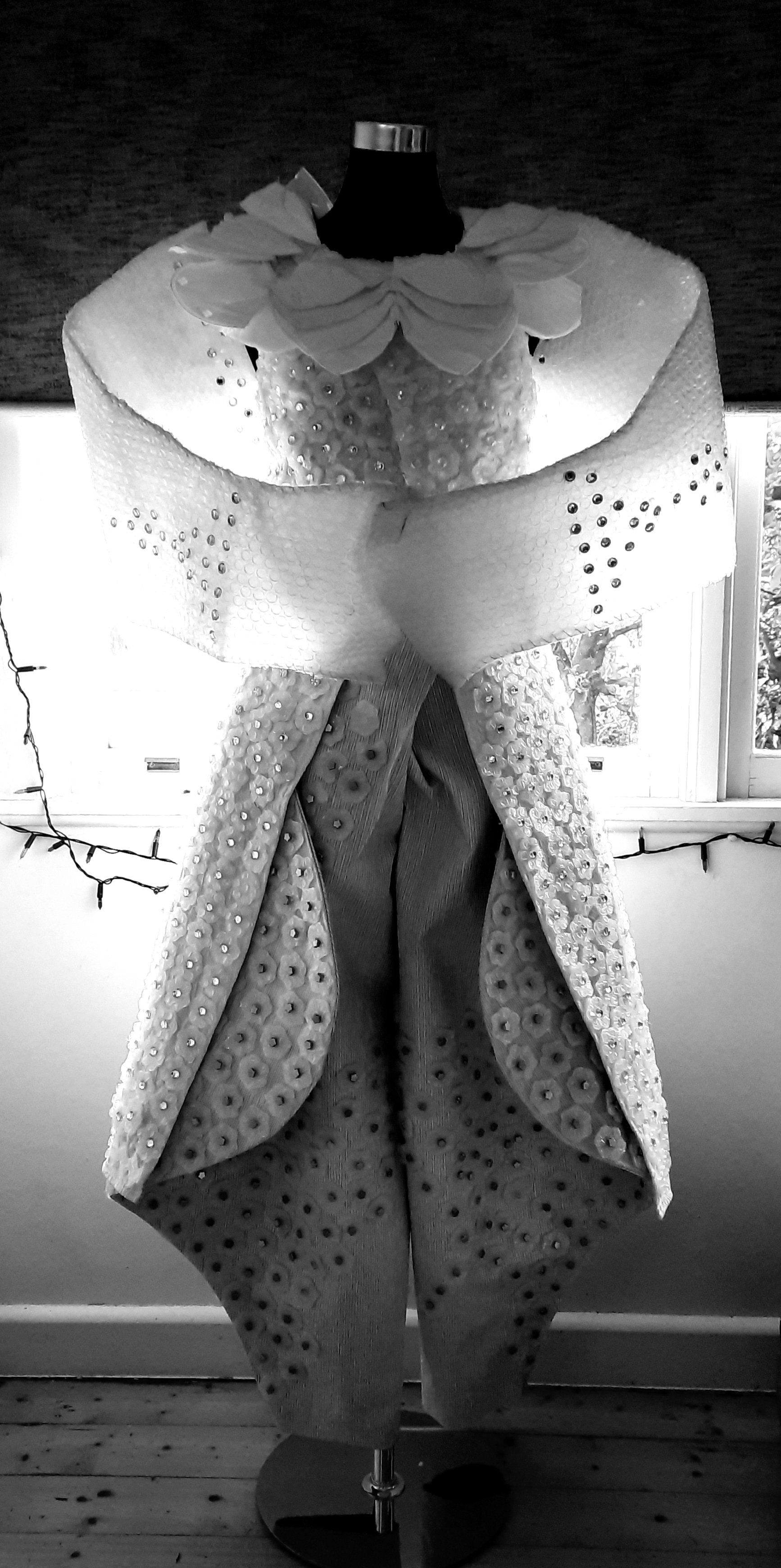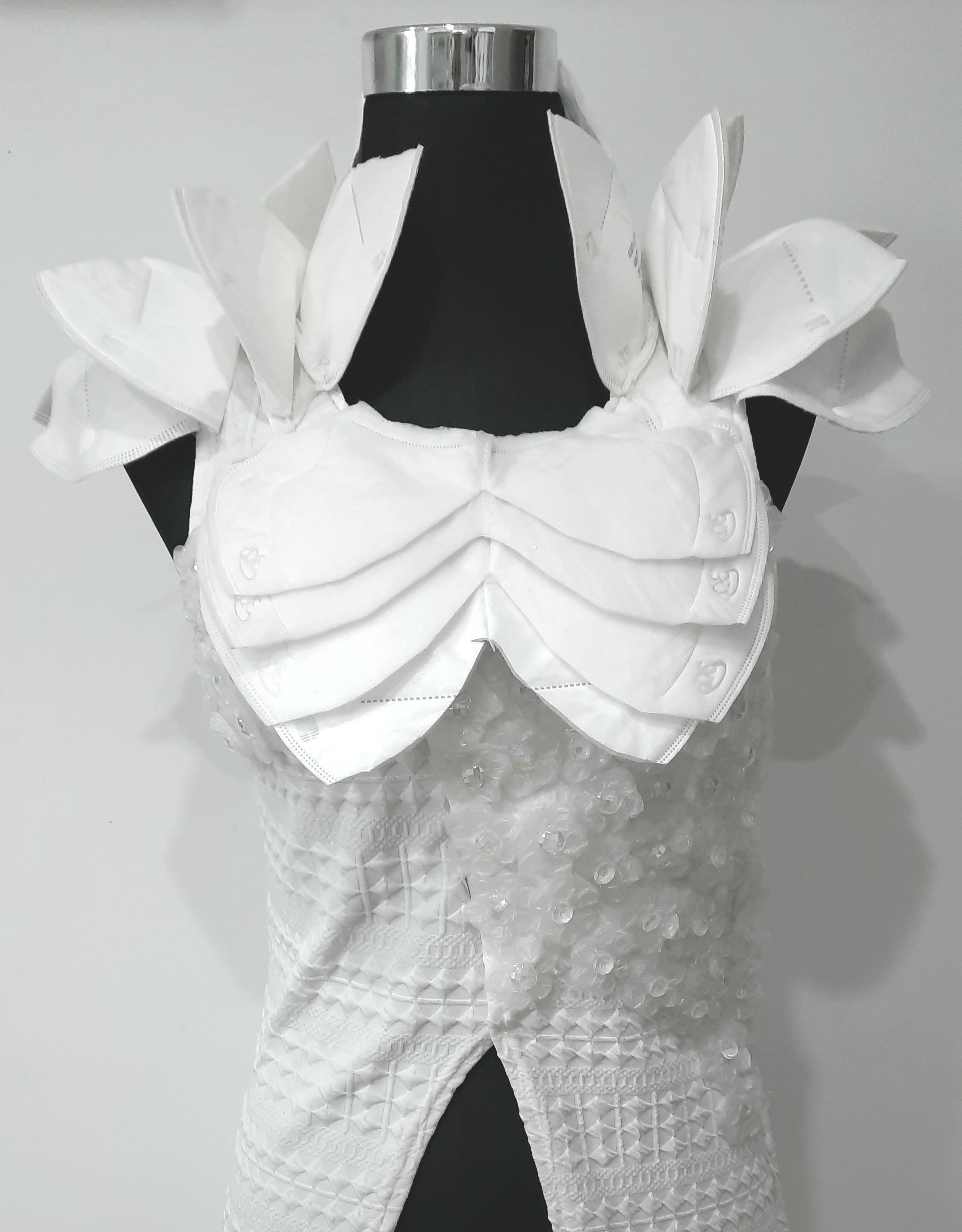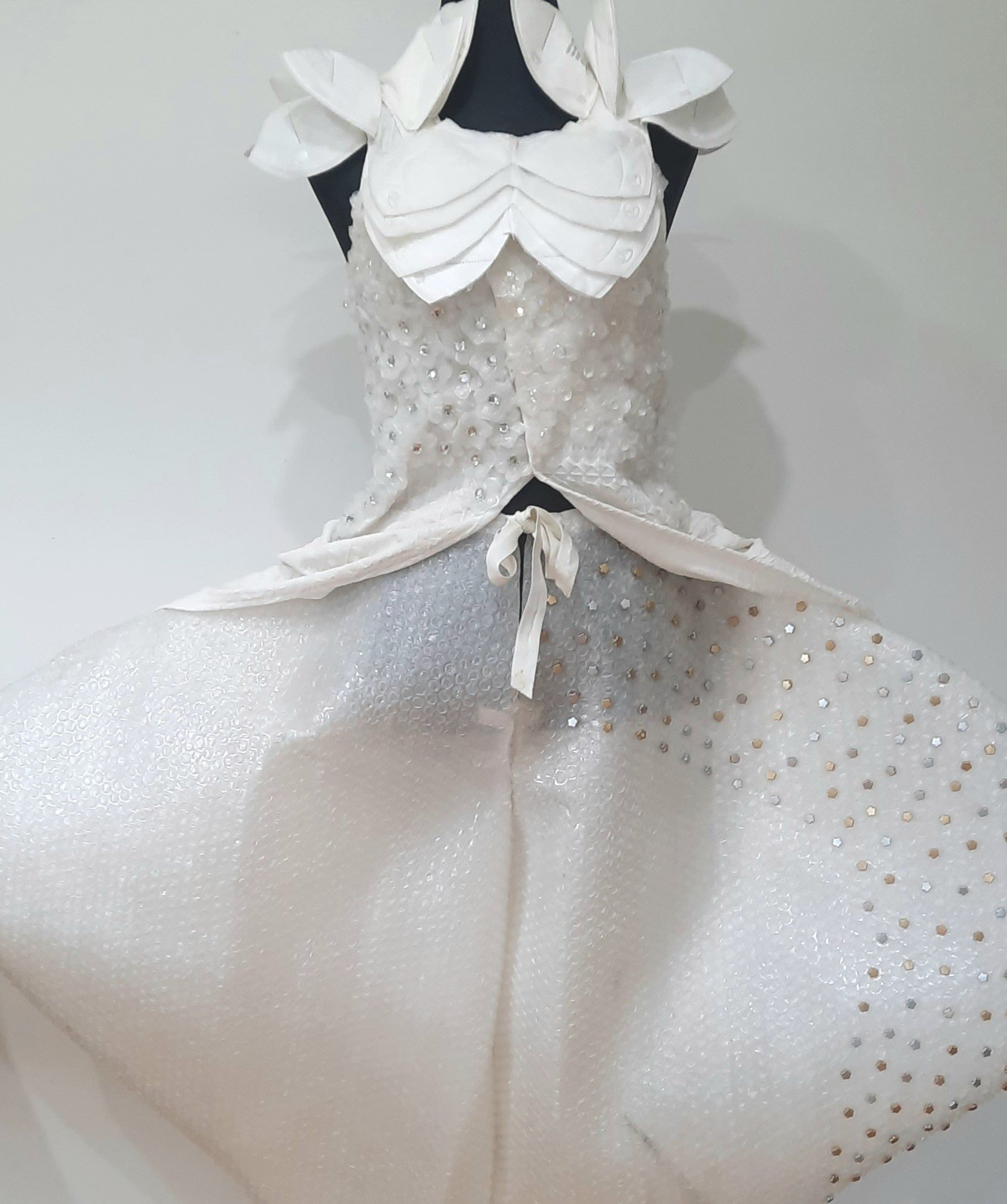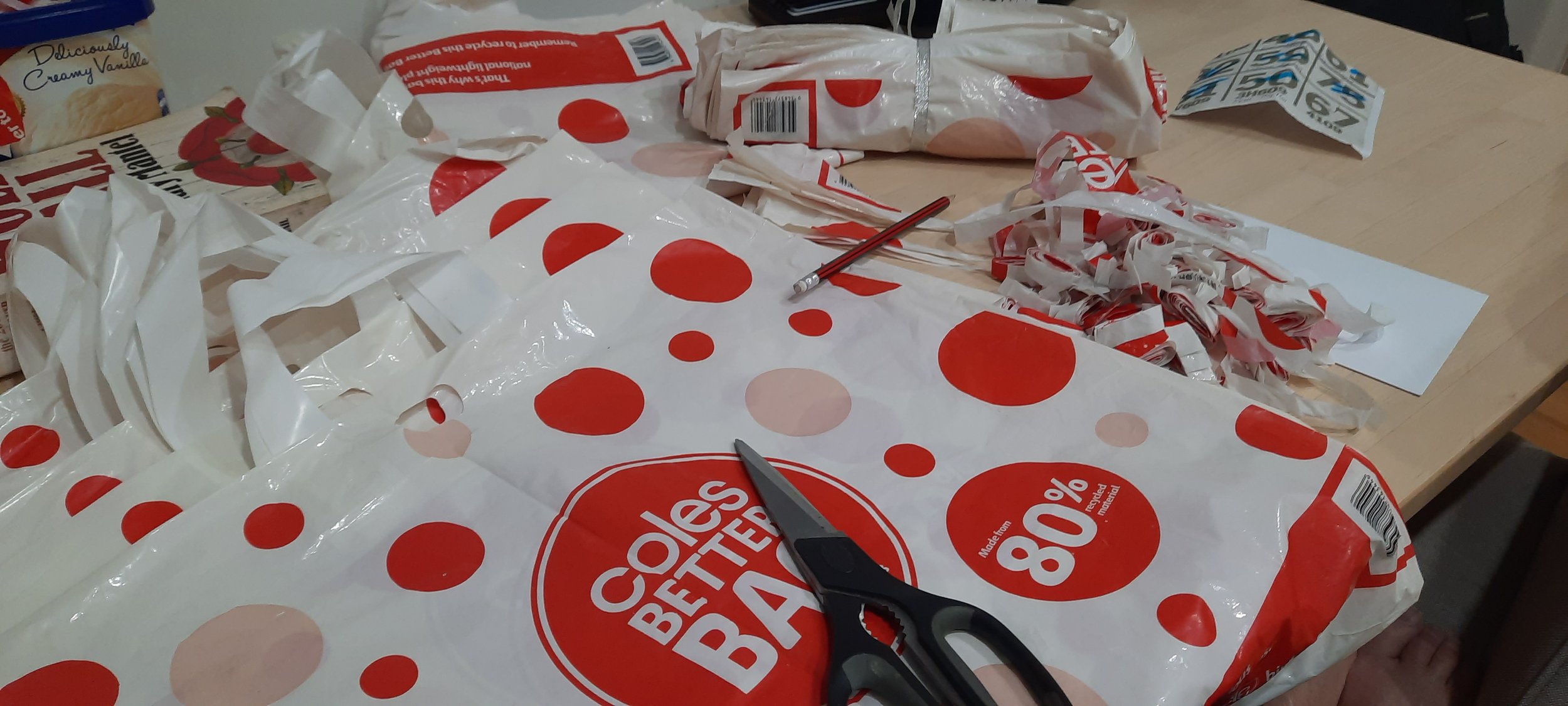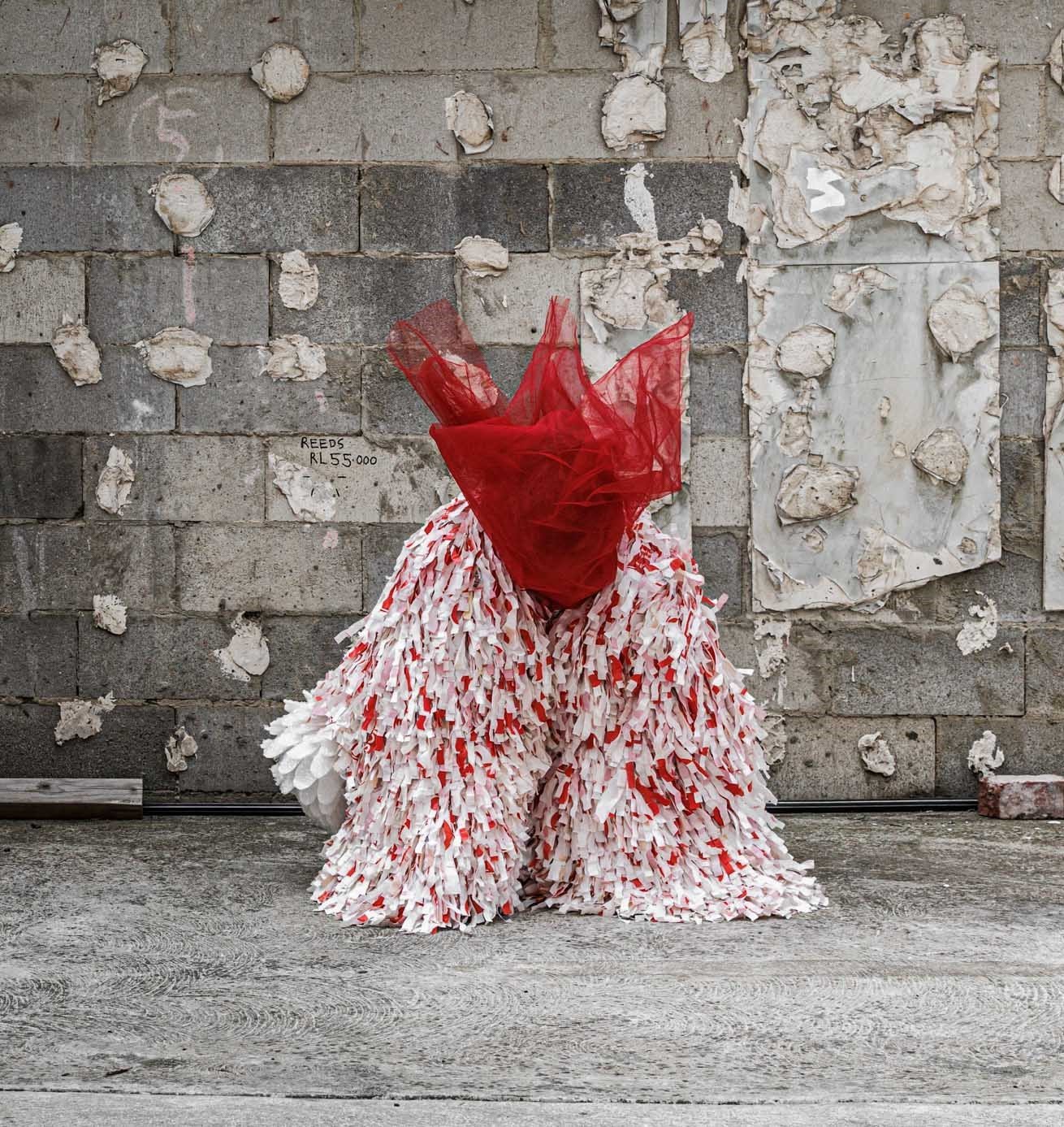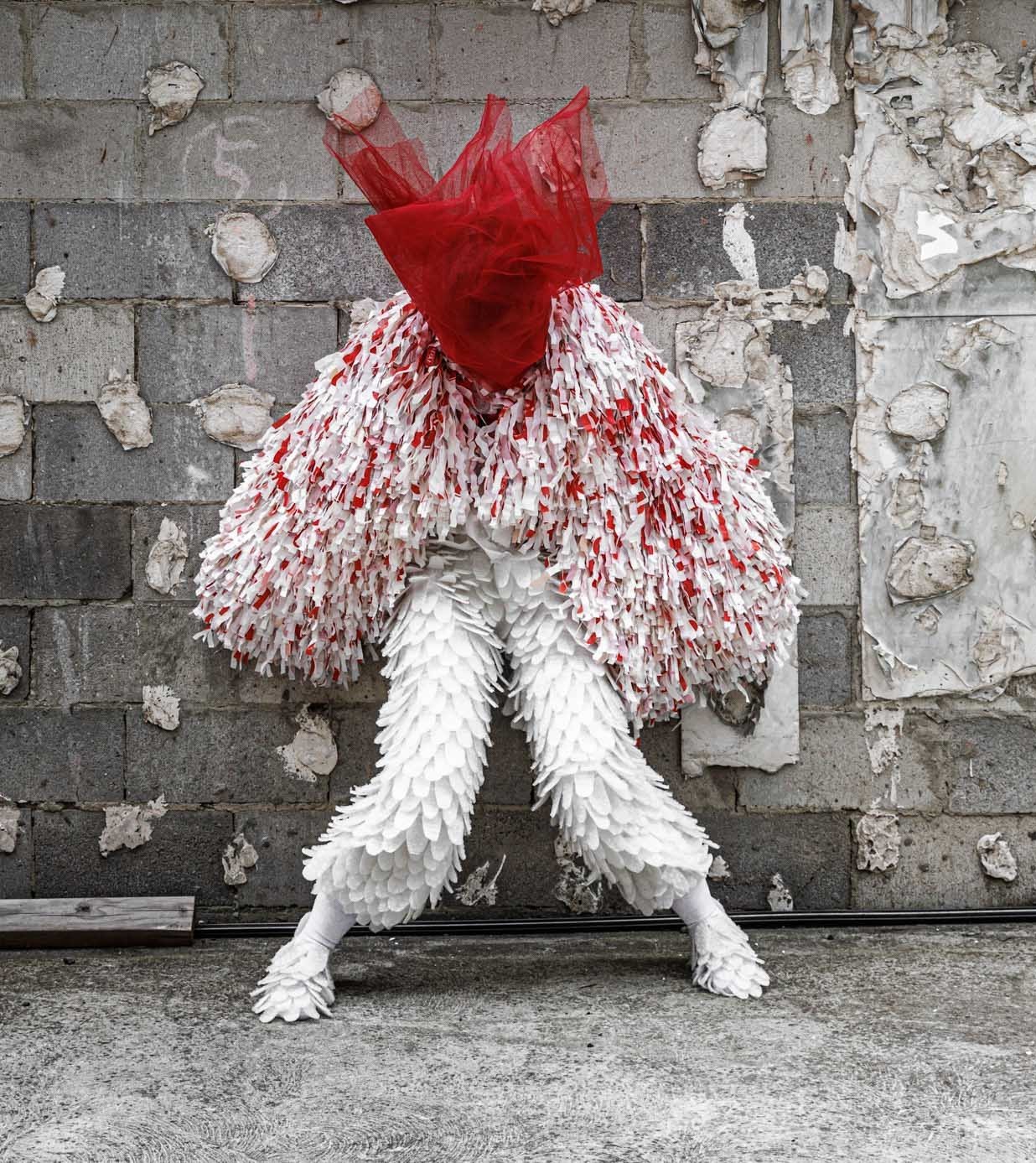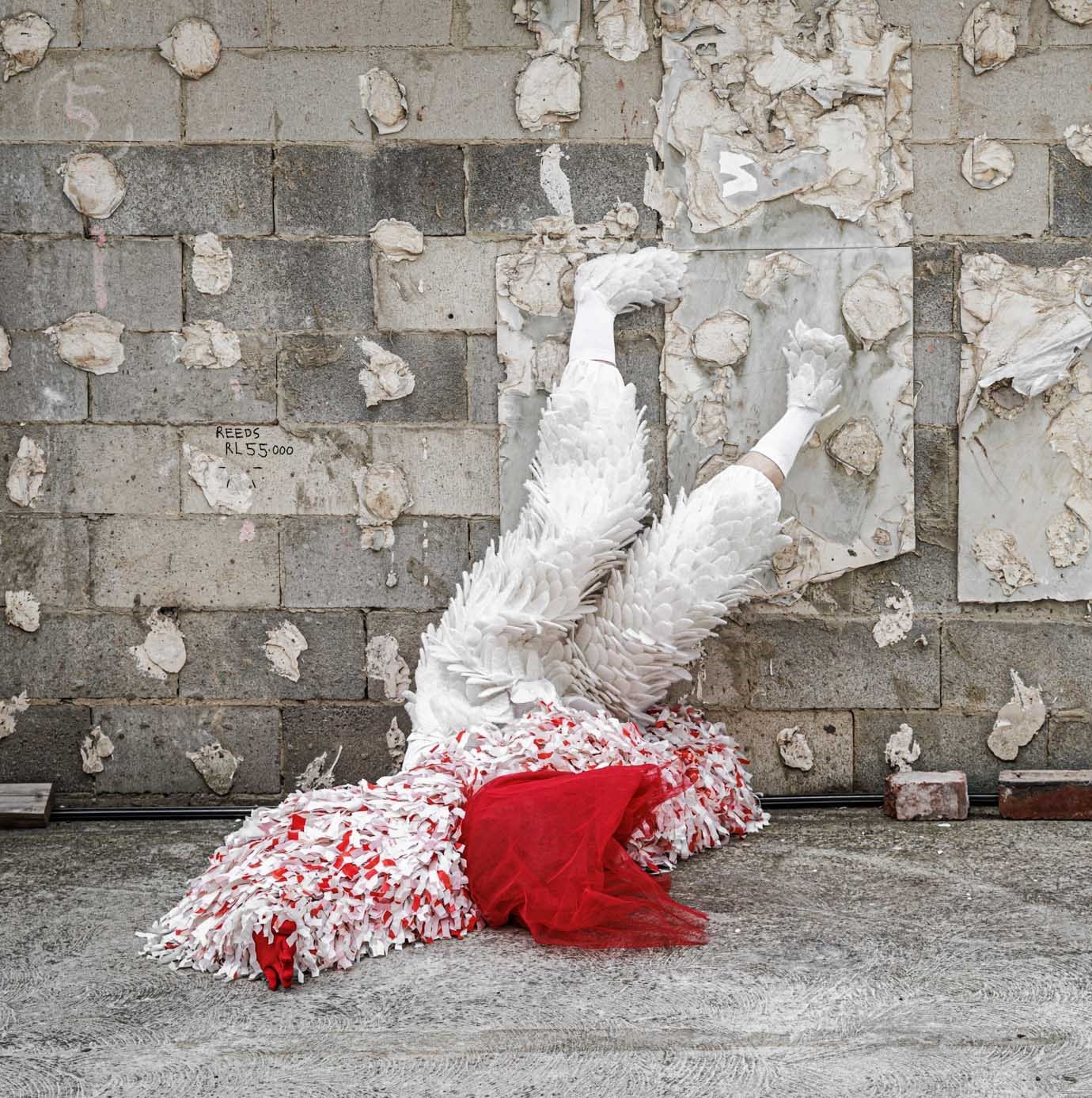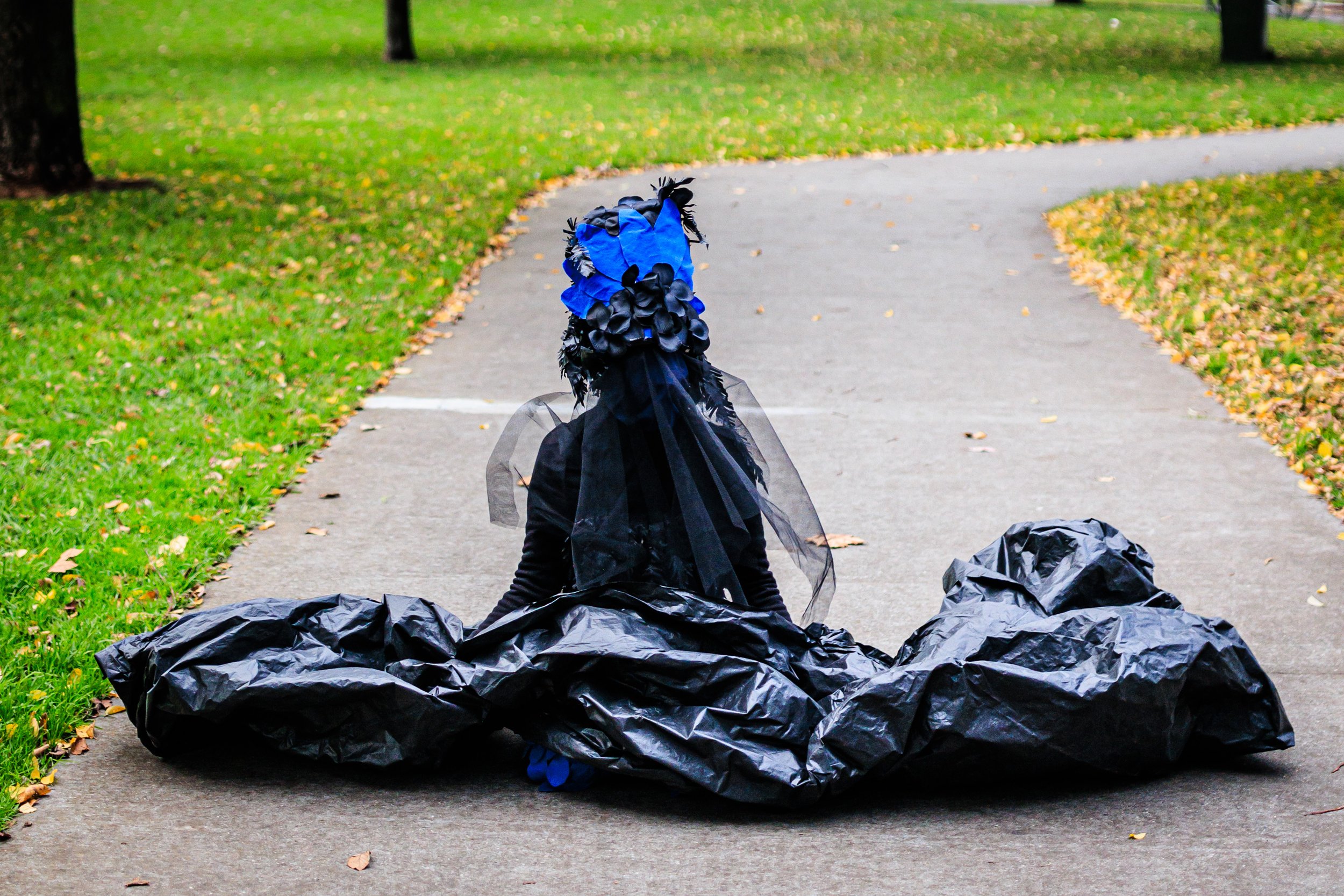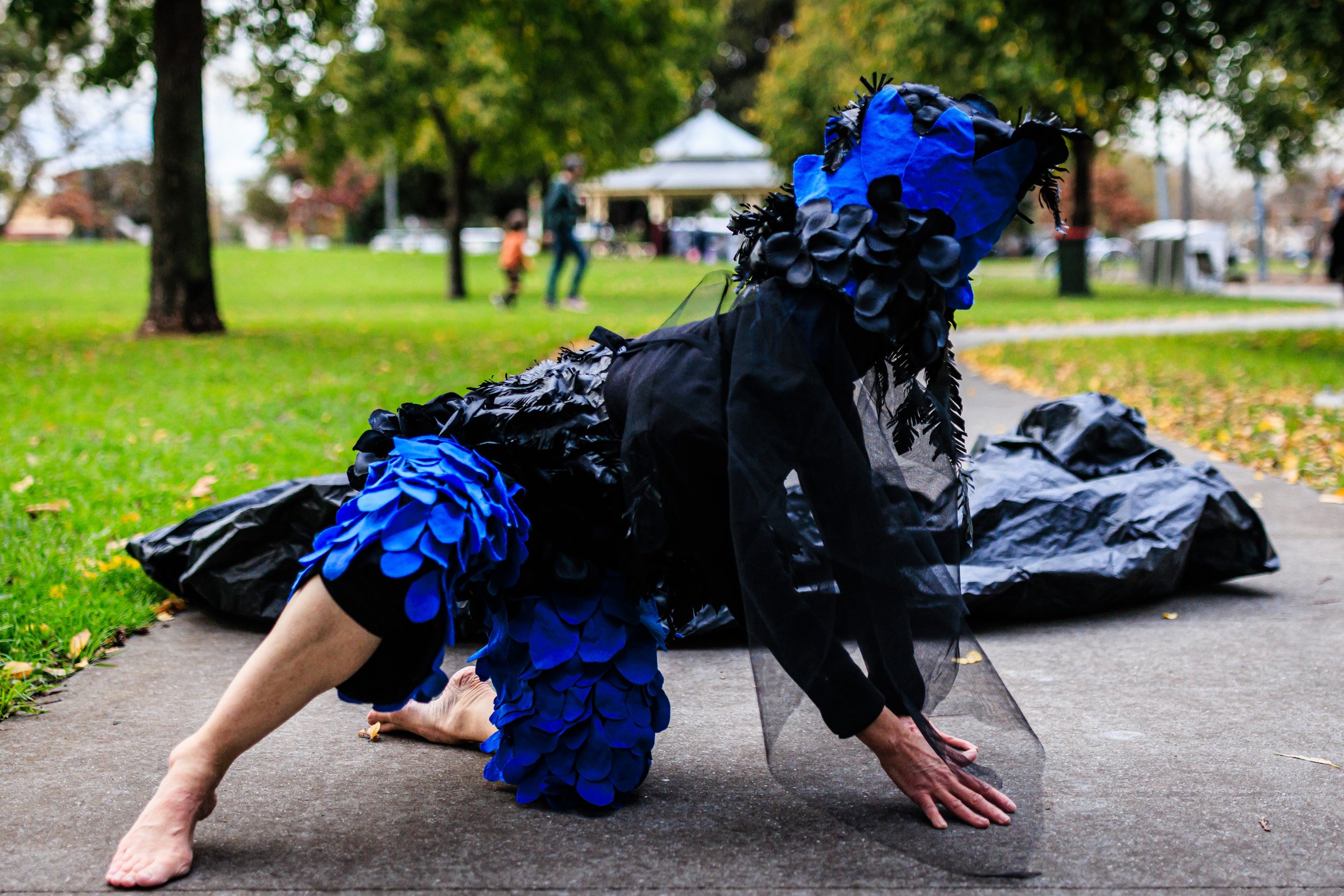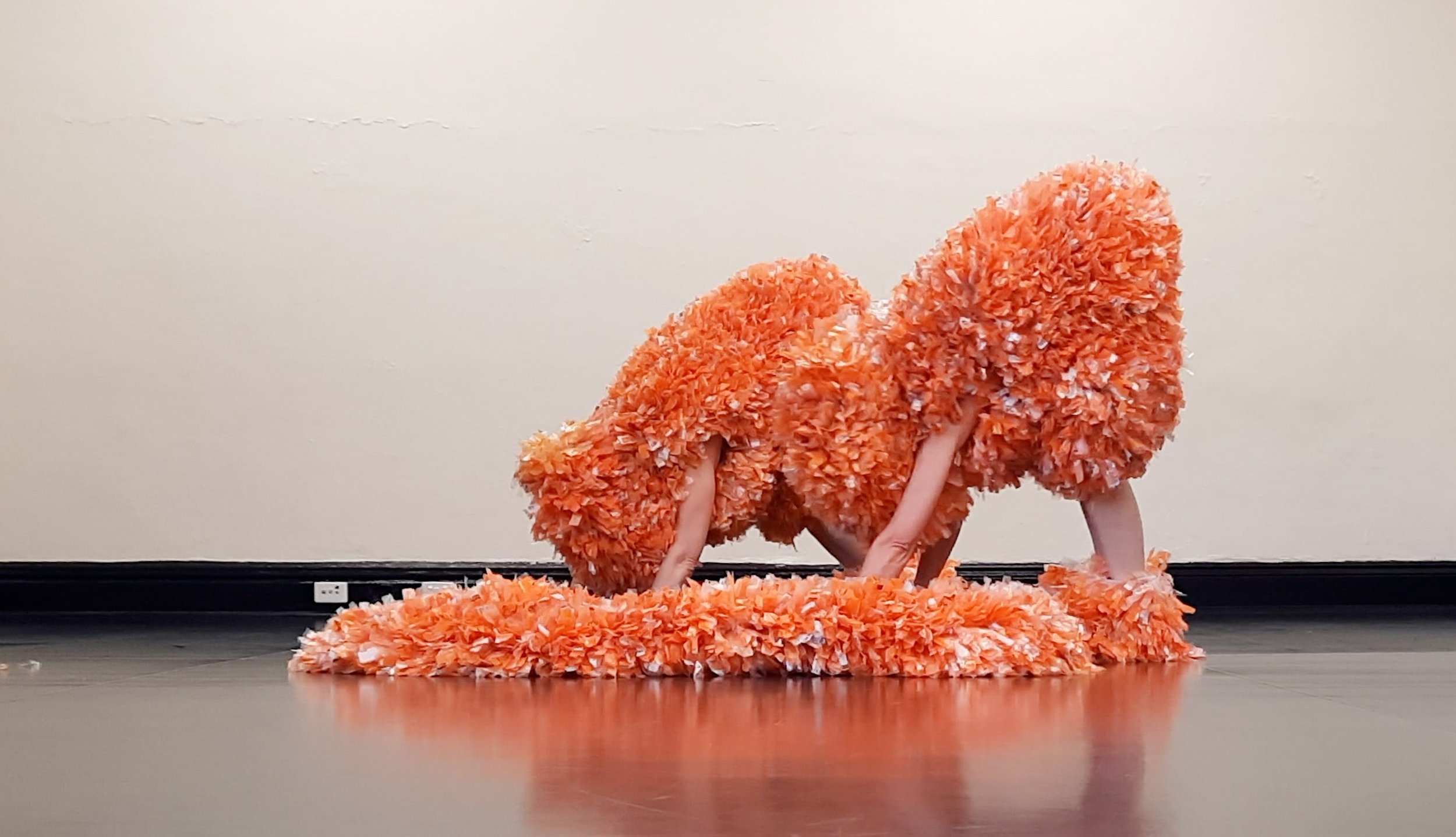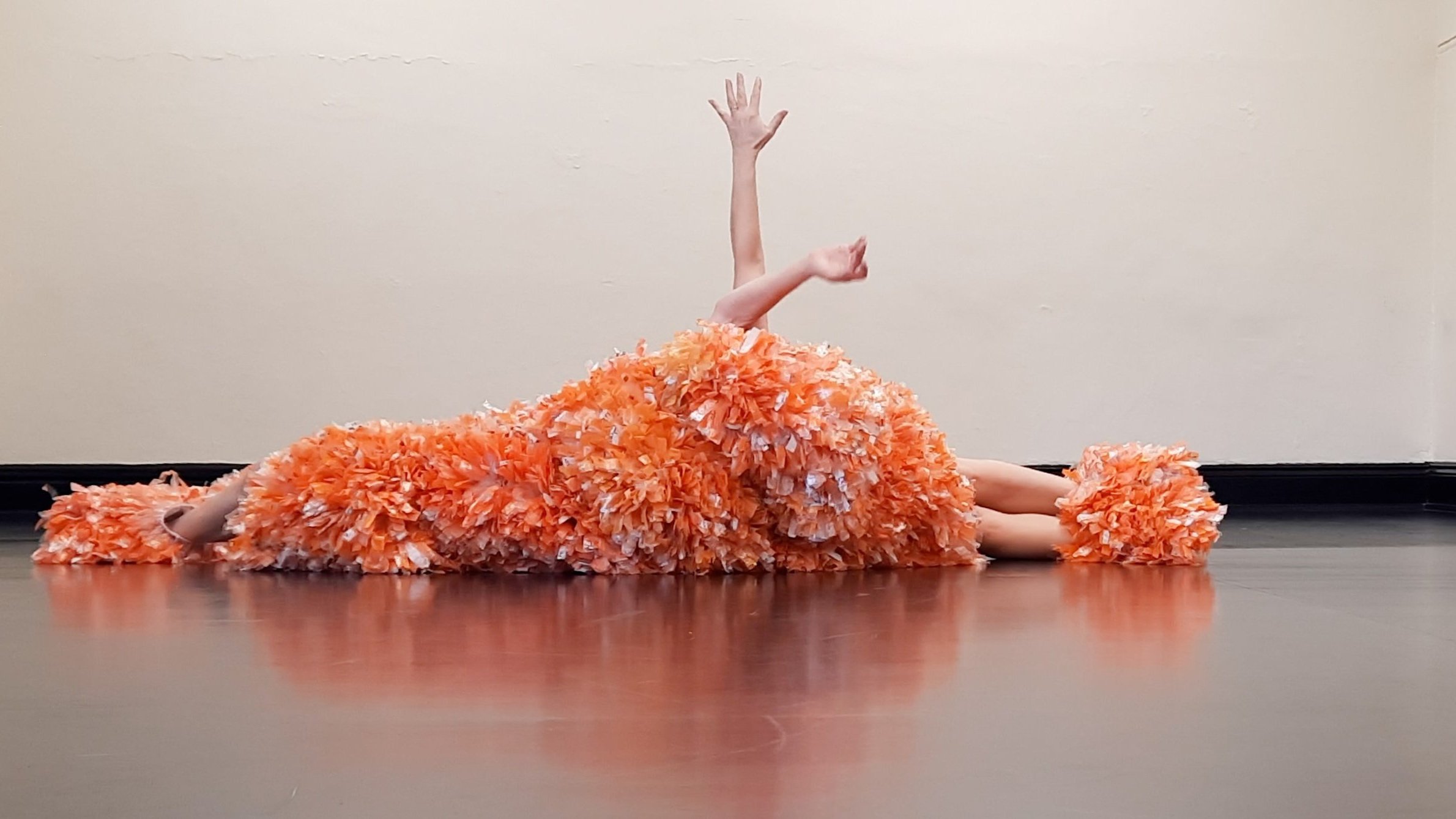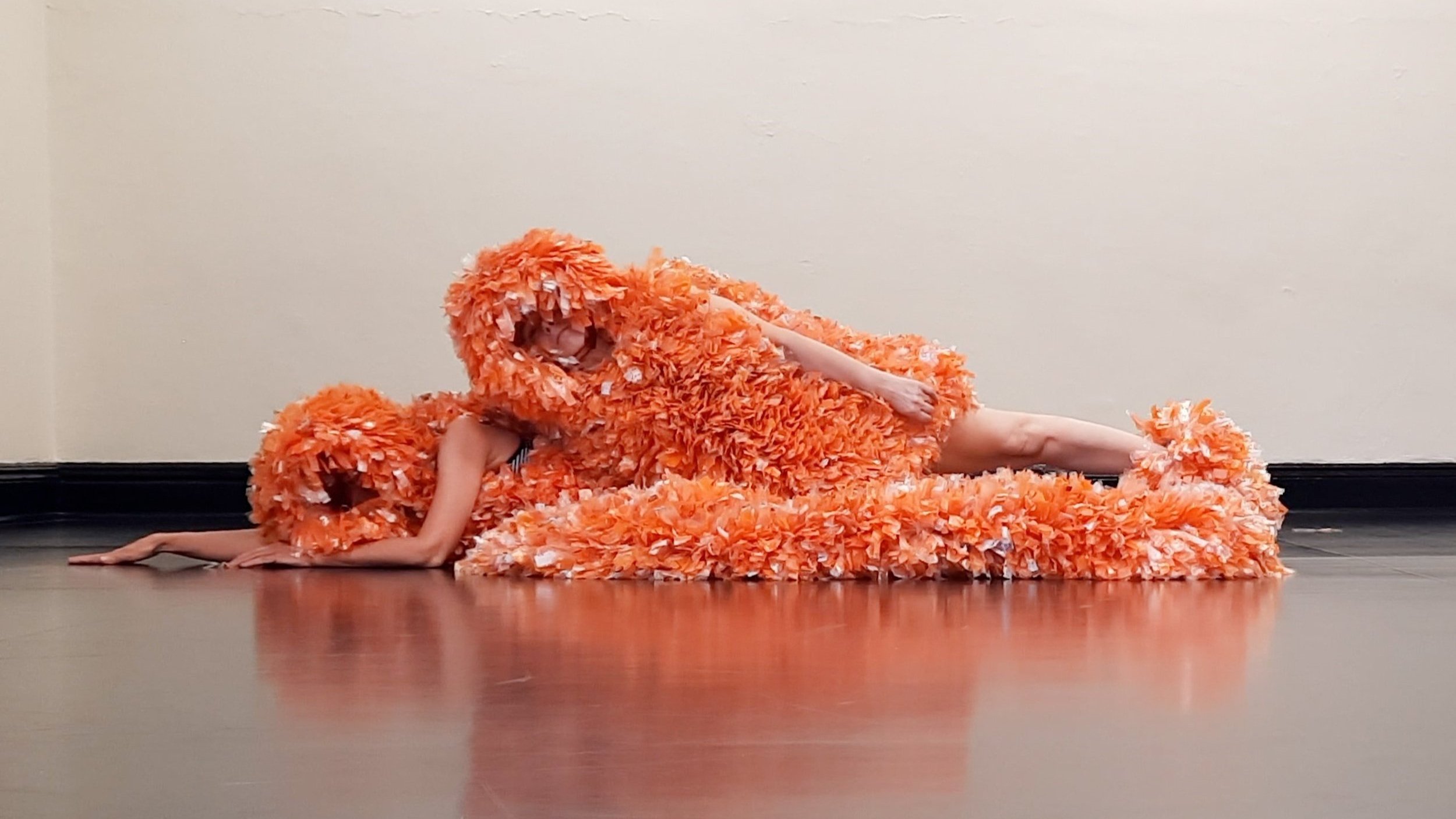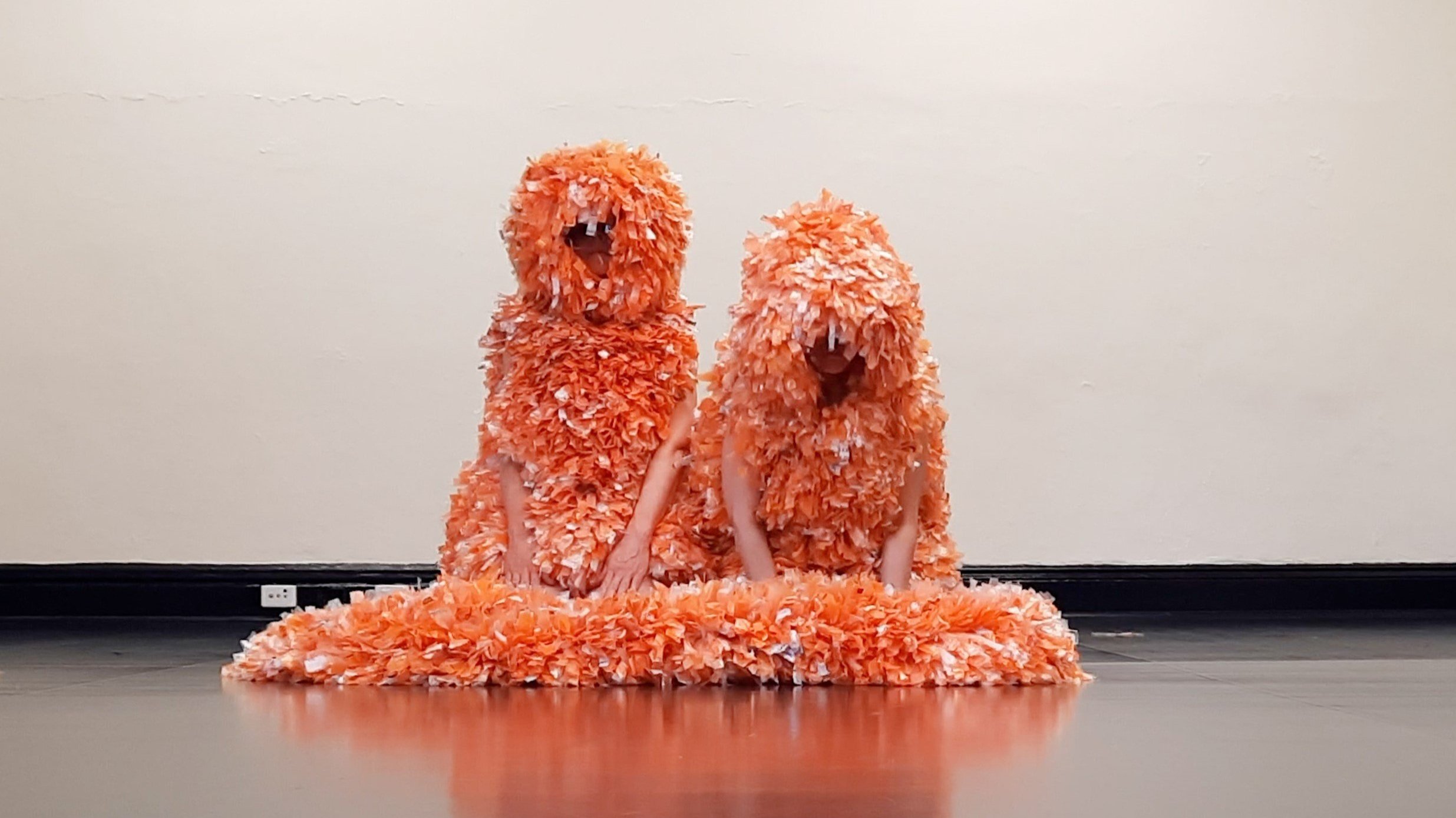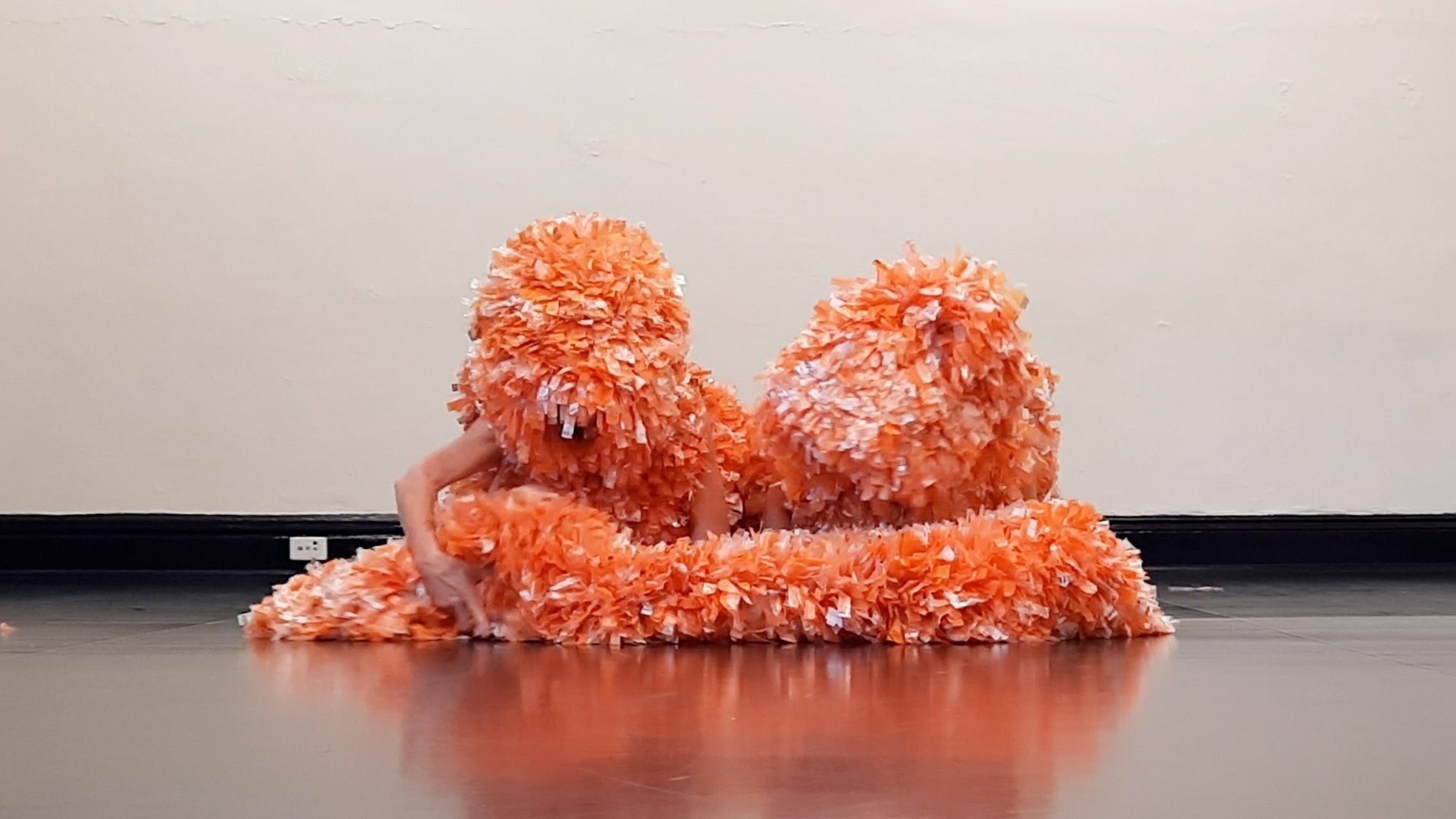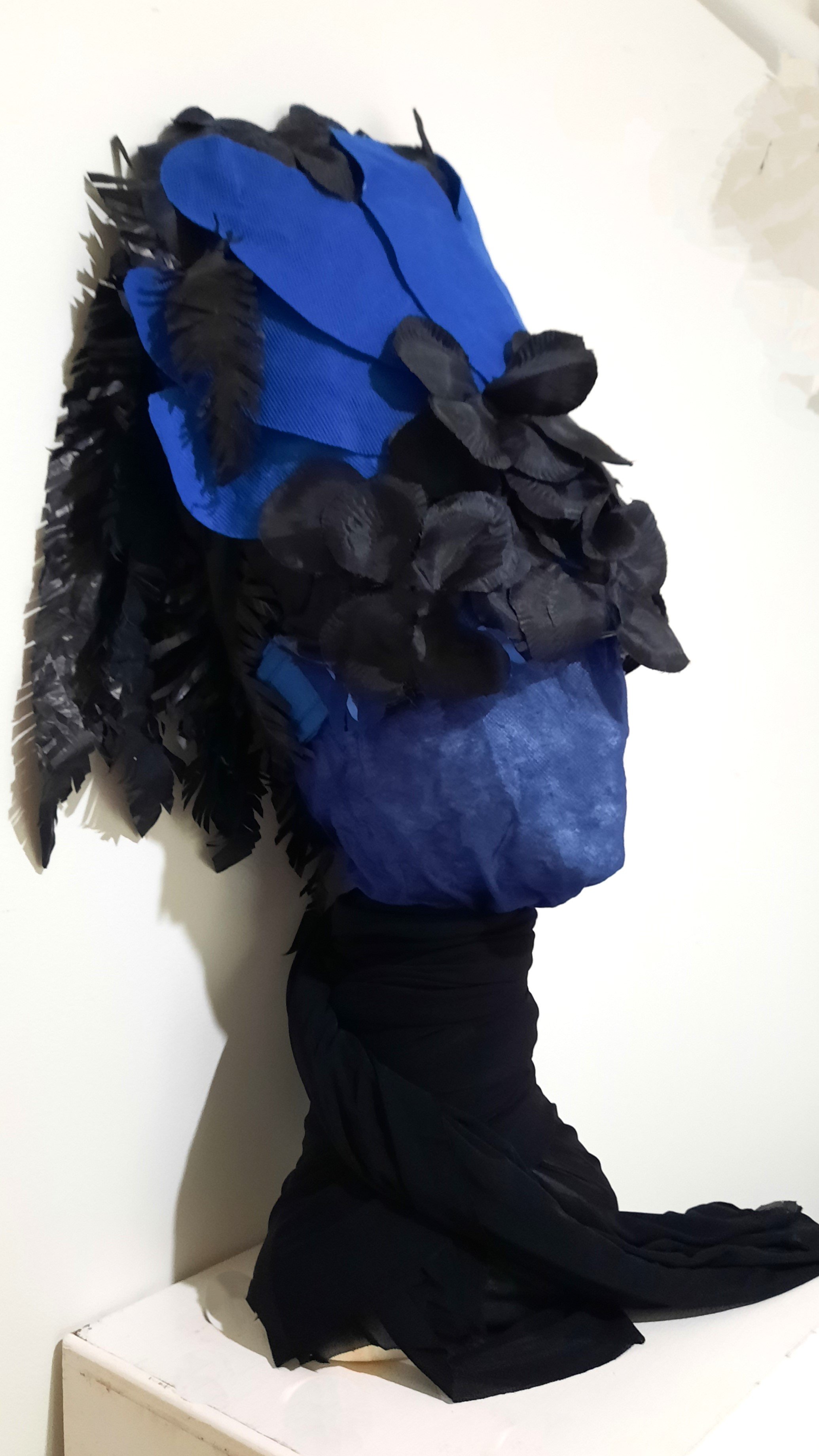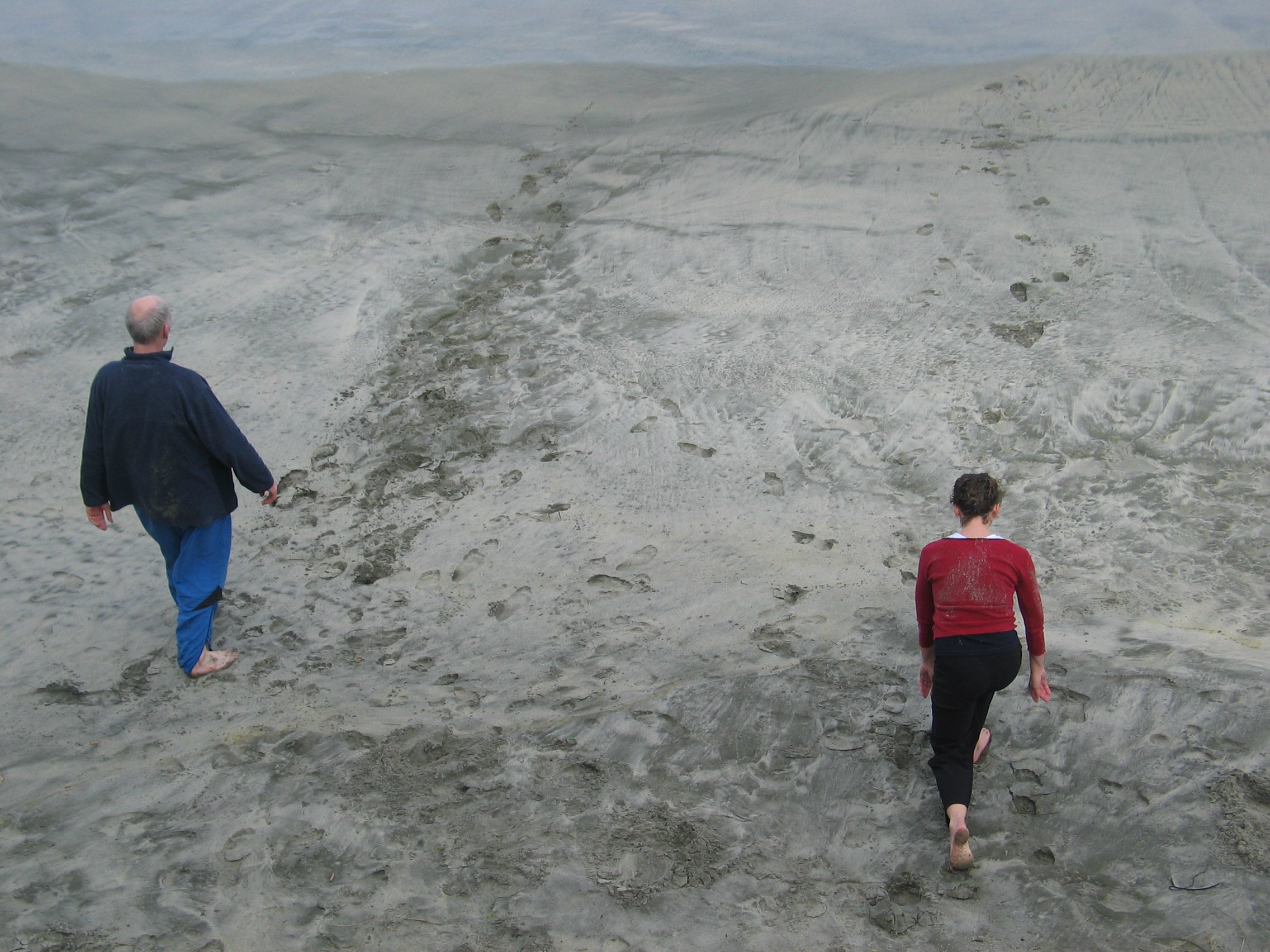recycled materials
feathers
Tens of thousands of plastic threads are woven into the orange bag mesh to produce large squares of plush material.
First used in Birdwatching (2018), applying the technique to create leggings, a bustle and bolero jacket, the approach was refined for Bird (2020) with a shortened pair of leggings and a glamorous orange shawl.
creature - concept
Creature is a charmingly ridiculous exploration of a metamorphosis from Mary Quant fashionista into a full-scale human accessory. This gently whacky work transforms thousands of recycled bags into a plush creature, the result of the fashionista’s extreme desire to accessorize in ever more daring ways.
With long-time collaborator photographer Robert Wagner, I explore the metamorphosis while Robert documents the process in still images.
Zombie Apocalypse wildlife spring catalogue
In development 2024
Armadillo moth - Bubble wrap, face masks
Shaggy Dragon - now decommissioned Coles shopping bags
Widdowary - Aldi Shopping bags, builders plastic, face shield
The Wolven - Bed sheets, single use white plastic bags, orange bags, Christmas decor
grande cygnus - single use shopping bags, white plastic table cloth, orange bags
Fluffletwins - pita bread soft plastic, orange bags
Other design pieces
feather fans - paper
Recycling plasic fans as a base, I layered butchers paper (remnant from another artist’s paper making project) and created 14 individual large scale feathers per fan. I created 18 sets of feathers for Firebird, each individually hand painted.
headpieces
In 2018 I began a series of headpieces that eventually included recycled coke bottles which we used en masse in the twilight work, The Archivists.
paper
Using end roll refuse from large scale printing, I first used and reused paper as set for Tales of the Pebbleverse. This paper was then repurposed to form the large paper dresses worn by the Archivists.
Other Materials
Reclaimed clothing - ties, material from other projects
Surfaces
Dance is ephemeral.
However it leaves behind traces: in the body, in the disturbance of air and the surfaces we move upon.
In 2007, through my Body is an Etching, I explored these components, particularly the traces left in the body over many years of using the same/similar movement pathways and the markings the moving body leaves behind on the earth. The former is realised on a kinaesthetic level and can be a profound experience for the mover. The other is more readily observed and appreciated by the untrained eye.
I am often drawn back to this seminal work for the scope of its implications:
the way we live on this earth and how our actions are intrinsically linked to the tracings/detritus we leave behind;
the ways in which our bodies change and affect the dynamic and efficiency of earlier biomechanic chains.
I now wonder how the traces we leave behind on the surface of things can be more clearly connected to the live performance of dance. It is one thing to inscribe or ‘download’ the movement of a body onto a surface, particularly if the primary focus is to make an art work in its own right - an object on paper or in sand. It is another thing to focus on the movement and create a 2-D representation that is secondary to the art of making and performing dance. It is the latter that interests me.
In the gallery below are relevant images from My Body is an Etching and 2 images (black and white) that show more recent tracings. I am at the beginning of this new journey and look forward to discovering attitudes and approaches.



























